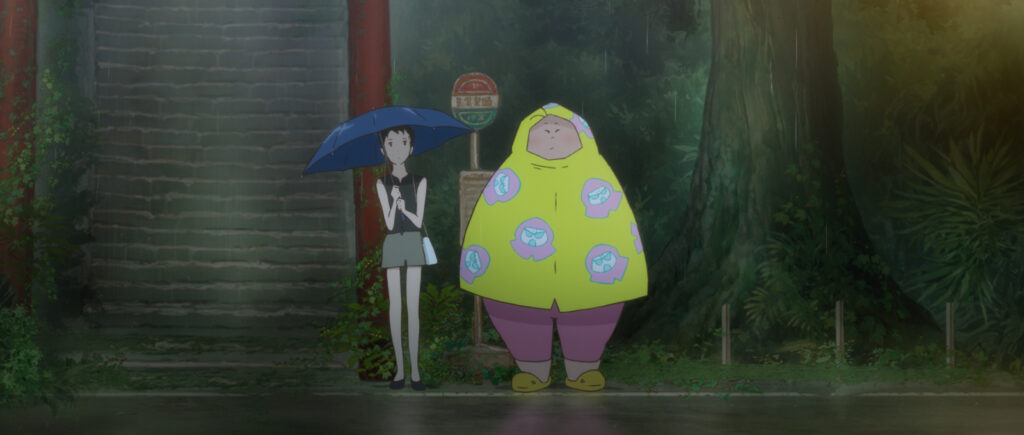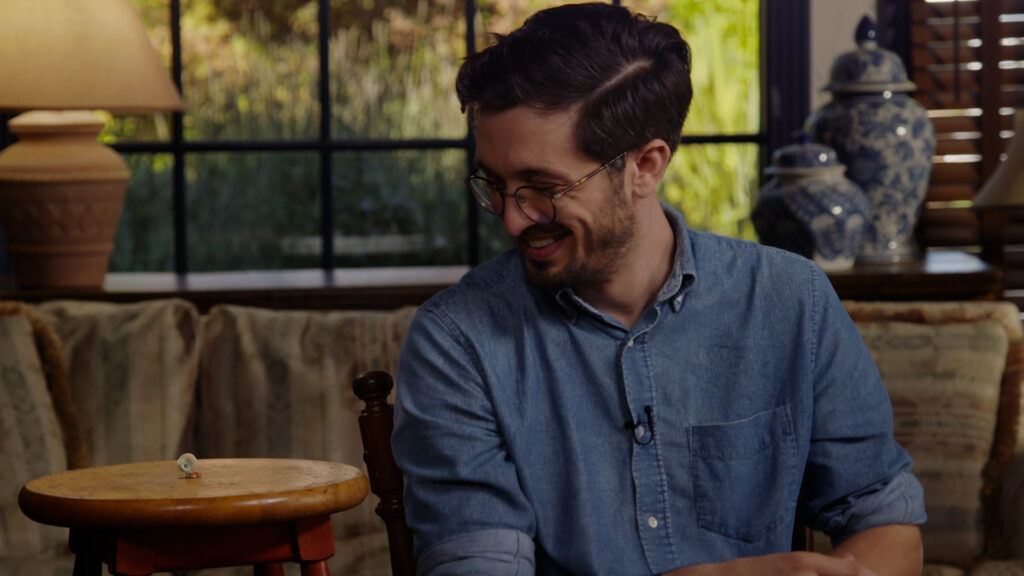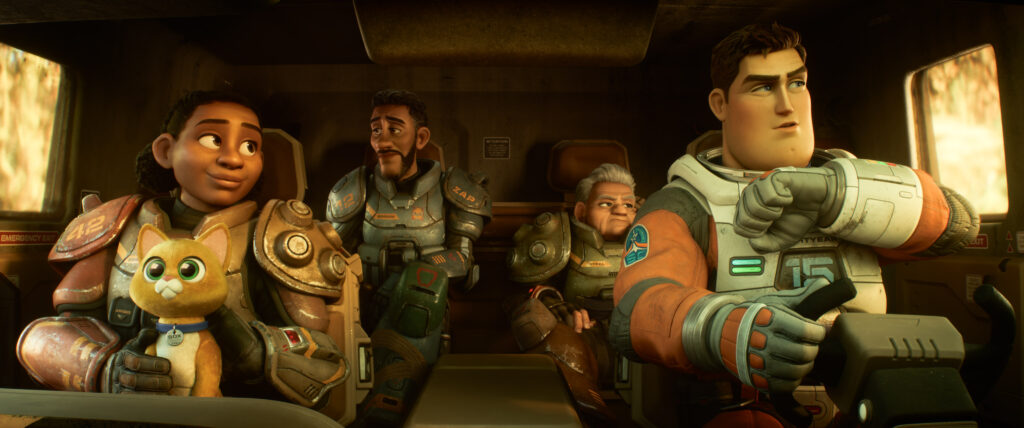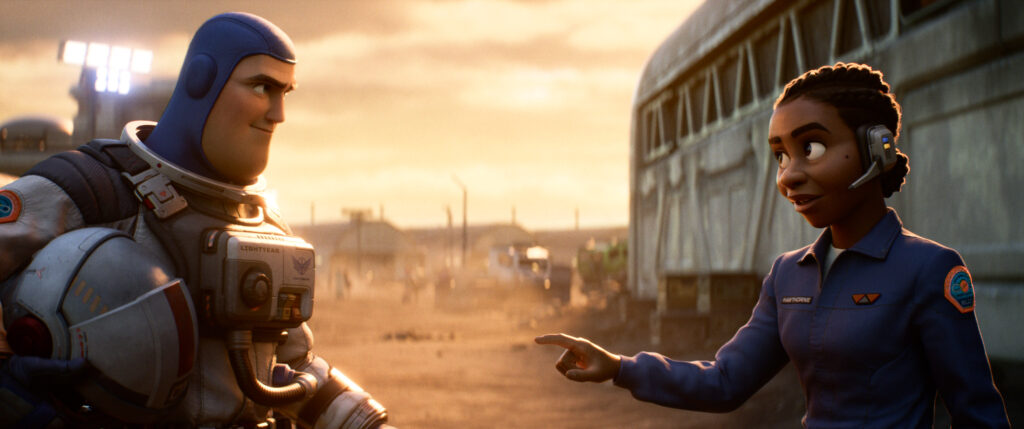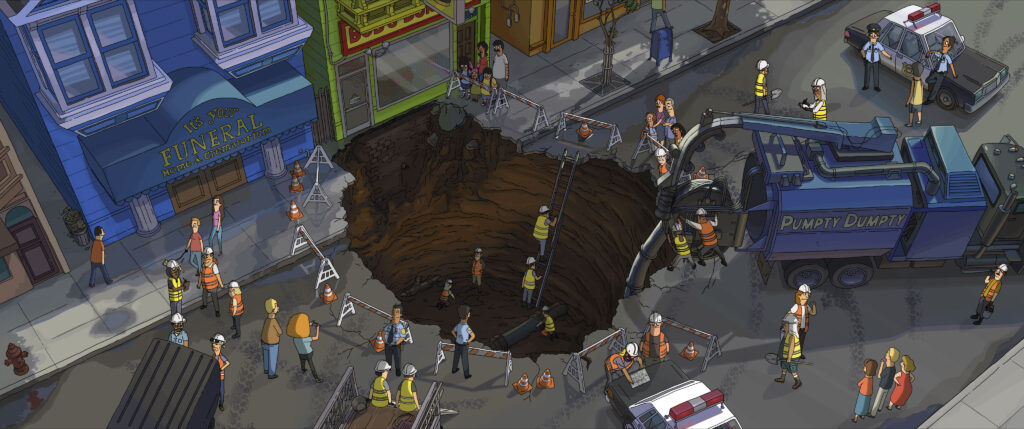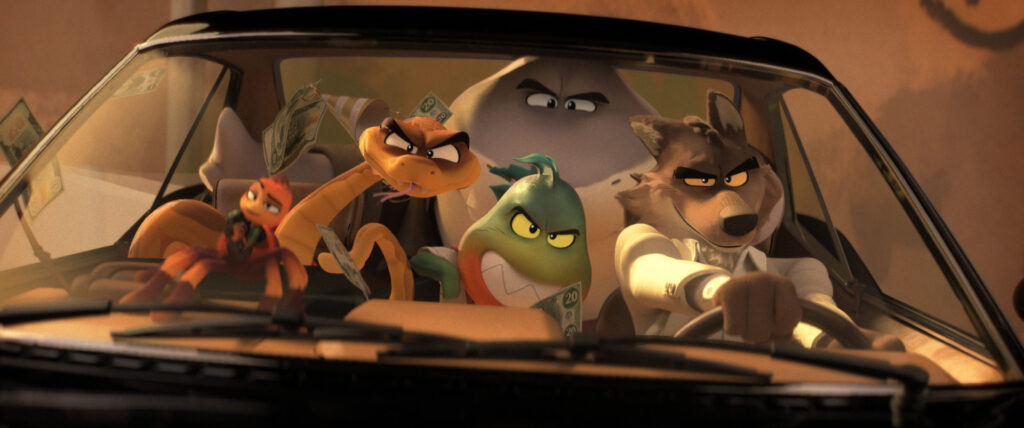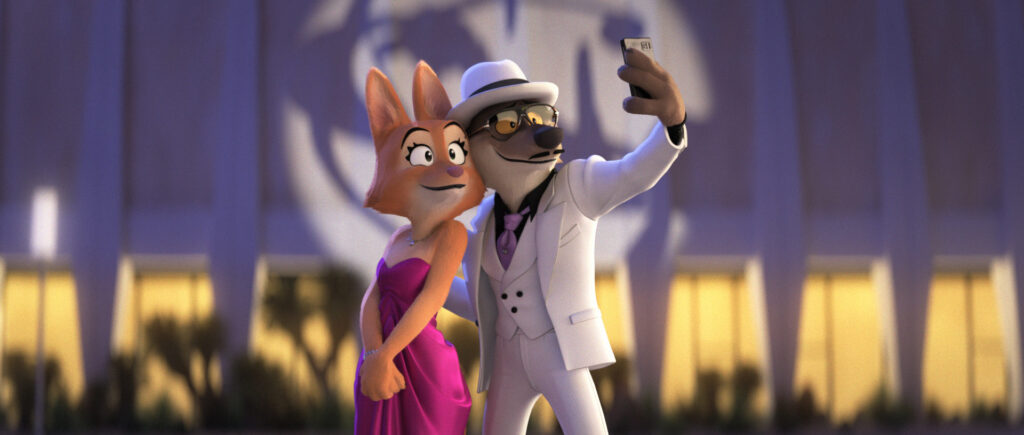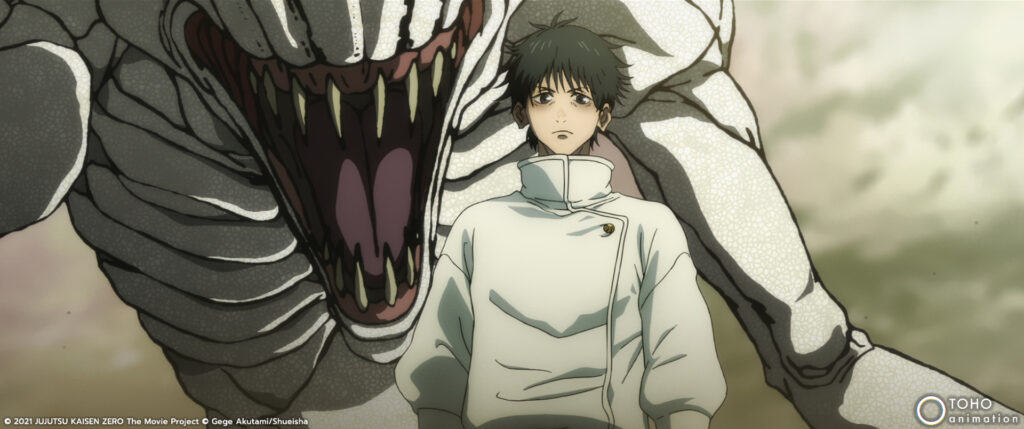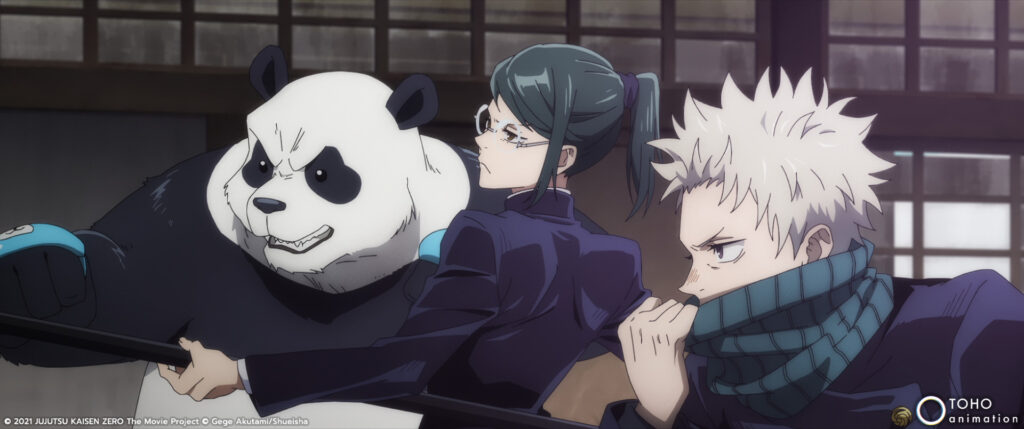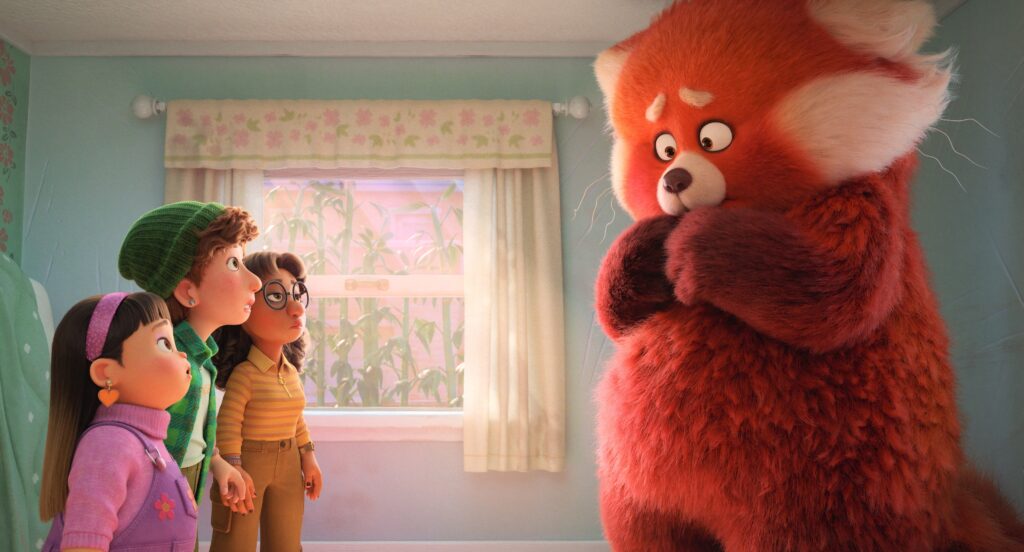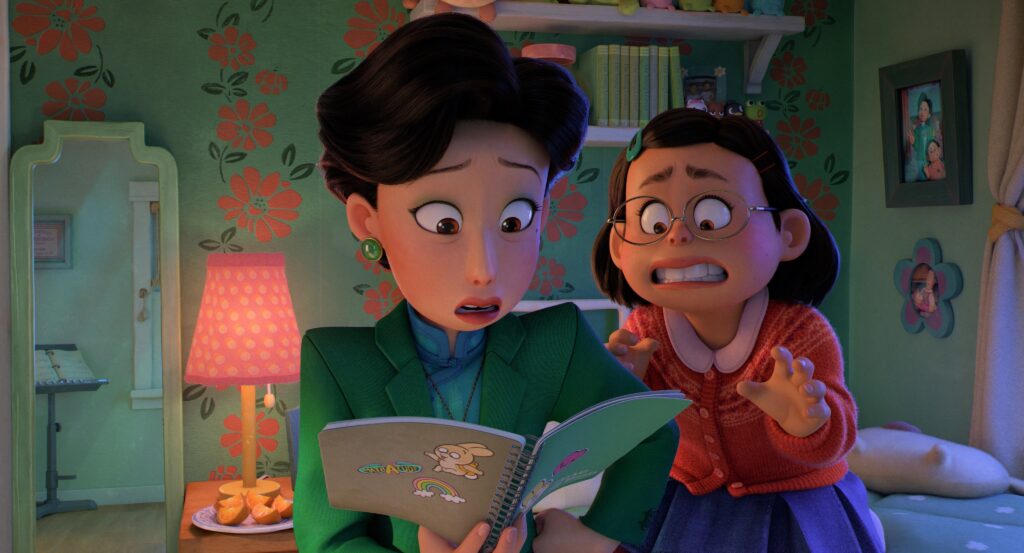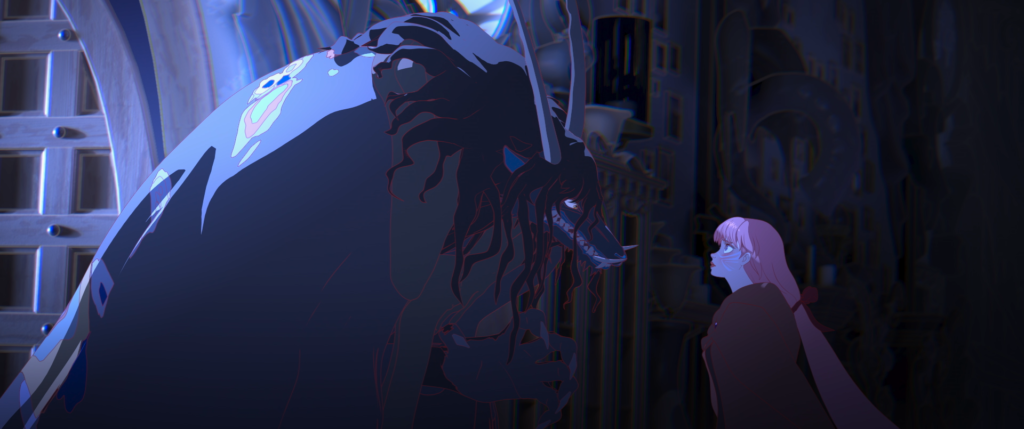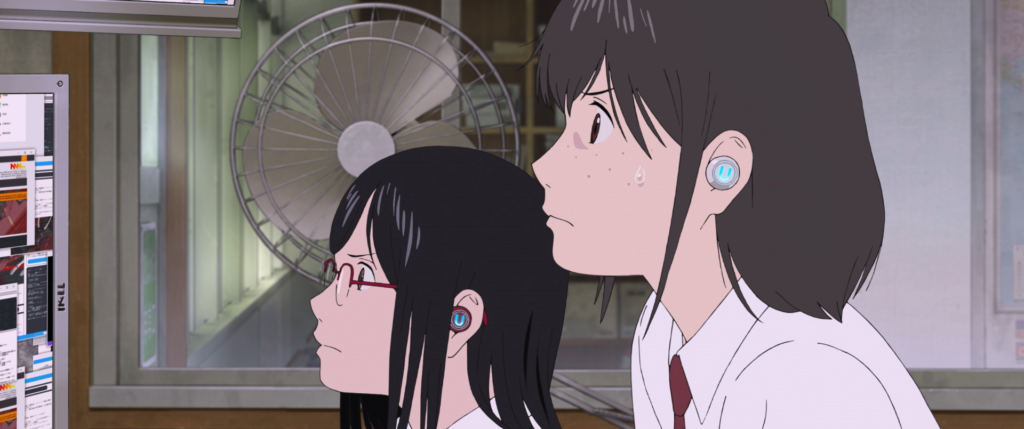July 13, 2022
by Carla Hay

“Paws of Fury: The Legend of Hank”
Directed by Rob Minkoff, Mark Koetsier and Chris Bailey
Culture Representation: Taking place primarily in the fictional town of Kakamucho, the animated film “Paws of Fury: The Legend of Hank” features a racially diverse cast (white, black, Asian and Latino) portraying talking animals.
Culture Clash: Inspired by the 1974 comedy film “Blazing Saddles,” a dog named Hank is chosen to be a samurai to save a town of cats, but Hank doesn’t know not he’s been set up by villain who wants to rid the town of the cats and wants Hank to be killed.
Culture Audience: “Paws of Fury: The Legend of Hank” will appeal primarily to fans of “Blazing Saddles” and people who enjoy family-oriented films with positive messages of self-confidence and not judging people by physical appearances.

No one should expect “Paws of Fury: The Legend of Hank” to be award-worthy. But as family entertainment with positive messages, memorable characters and an action-filled story (that sometimes gets jumbled), the movie delivers on a satisfactory level. Although “Paws of Fury: The Legend of Hank” was inspired by the classic 1974 film “Blazing Saddles,” anyone expecting the dark comedy of “Blazing Saddles” will be sorely disappointed.
“Paws of Fury: The Legend of Hank” is an animated film geared to people of various ages (mostly underage kids), so the tone of the movie is lighthearted and lightweight. Because it’s an animated movie with talking animals and a theme of an underestimated animal training to be a protective fighter, “Paws of Fury: The Legend of Hank” might also get some comparisons to the 2008 animated film “Kung Fu Panda.” “Paws of Fury: The Legend of Hank” isn’t as good as “Kung Fu Panda” and is unlikely to have as large of a fan base that the “Kung Fu Panda” franchise has, but not all movies aspire to be classics.
Directed by Rob Minkoff, Mark Koetsier and Chris Bailey, “Paws of Fury: The Legend of Hank” has the benefit of very talented voice cast members who give the movie’s characters unique personalities. This is not the type of animated film where it’s hard to tell the characters apart from each other. Ed Stone and Nate Hopper wrote the adapted screenplay for “Paws of Fury: The Legend of Hank,” which also gives screenwriting credit to “Blazing Saddles” screenwriters Mel Brooks, Norman Steinberg, Andrew Bergman, Richard Pryor and Alan Uger.
“Paws of Fury: The Legend of Hank” begins with showing a town called Kakamucho, which is populated entirely by cats. Although the town could exist anywhere, the Kakamucho residents follow ancient Japanese military traditions of shoguns and samurai. The town has recently been plagued by bandits. The shogun of Kakamucho will be arriving soon and will be asked by find samurai who can protect the town. “Blazing Saddles” director/co-writer Brooks is the voice of Shogun, a British shorthair cat.
However, the story’s villain wants to get rid of the residents of Kakamucho, so that he can use the land for greedy redevelopment purposes. The villain is a scheming Somali cat named Ika Chu (voiced by Ricky Gervais), a character that people might or might not enjoy watching, depending on how they feel about Gervais and his cutting British comedy that he brings to this cat’s personality. In movies like this, every villain has a sidekick. Ika Chu’s sidekick is Ohga (voiced by George Takei), a burly Manx cat who leads Ika Chu’s army.
Ika Chu has concocted a plan where he decides to fool a dog into thinking that the dog has been selected as a samurai to protect Kakamucho. Because cats and dogs have been enemies, Ika Chu is counting on the dog to be killed by the Kakamucho residents. Because it’s against the law to kill a samurai, Ika Chu will then have the entire town arrested, and then have the land to himself.
The dog who becomes the unwitting target of Ika Chu’s dastardly plan is Hank (voiced by Michael Cera), a socially awkward beagle who has recently been released from prison. It’s implied that Hank might have been unjustly imprisoned simply because he’s a dog in a cat’s town. Iku Chu summons Hank and lies to him by saying that Hank has been chosen as the samurai to protect Kakamucho. When Hank expresses skepticism, Ika Chu spontaneously scratches the word “samurai” on a coffee mug and gives it to Hank as an “official” memento that Hank is now an appointed samurai.
Hank has no idea how to be a samurai, so he enlists the help of tuxedo cat Jimbo (voiced by Samuel L. Jackson), a washed-up and cranky samurai, who spends a lot of time getting drunk on catnip. Jimbo is very reluctant to become a sensei mentor to Hank, but he eventually agrees. Jimbo isn’t entirely convinced that a dog will be accepted by the cats of Kakamucho.
Hank and Jimbo do a lot of arguing during this training, but they have somewhat of a emotional breakthrough when Hank finds out that he’s met Jimbo before. Hank tells Jimbo about a time several years earlier when an unidentified samurai cat rescued Hank from being bullied by some bad dogs. Jimbo reveals that he was that cat.
Jimbo eventually opens up to Hank about something painful from his past too. Years ago, Jimbo was head of security at the birthday party for his employer, an elite feline named Toshi. However, Jimbo accidentally caused a major disaster at the party. The accident resulted in Toshi’s in-laws to become sterile. This mishap embarrassed Jimbo so much, he quit being a samurai and became a bitter recluse.
Although this is a fictional animated film, “Paws of Fury: The Legend of Hank” has a lot to say about prejudices that can negatively divide individuals. It’s a message that’s explicitly stated in the film, but one that’s still meaningful. The bigotry between the cats and dogs in “Paws of Fury: The Legend of Hank” is obvious symbolism for bigotry in hate groups that teach people to hate others based on their identities or physical appearances.
Observant viewers will also notice how “Paws of Fury: The Legend of Hank” shows something that often happens in real life: opinions and thoughts from young females are often dismissed just because they’re young females. In the movie, a young female Persian cat named Emiko (voiced by Kylie Kuioka), who wants to be a samurai, is intelligent and observant. However, her smart ideas are often ignored, or an older male in the community takes credit for her ideas. The way that Emiko handles this disrespect and what happens to her in the end are good lessons for people of any age.
“Paws of Fury: The Legend of Hank” gets a little messy with a tad too many subplots. One of these subplots involves a giant ginger cat named Sumo (voiced by Djimon Hounsou), who is at various times feared and adored. Sumo arrives in Kakamucho as a fighting enemy to Hank, but will Sumo ends up as a friend?
In “Paws of Fury: The Legend of Hank,” the female cats are often the calm voices of reason amid the chaos. Yuki (voiced by Michelle Yeoh) is a cheerful Persian cat who is Emiko’s mother. Little Mama (voiced by Cathy Shim) is a wise matriarch of Kakamucho. There’s also a clownish duo of friends: klutzy calico cat Chuck (voiced by Gabriel Iglesias) and tuxedo cat Ichiro (voiced by Aasif Mandvi), who are like the Laurel & Hardy of Kakamucho.
The movie has no shortage of action, with some scenes working better than others. The last third of the movie consists of a flurry of battles and chase sequences that should hold viewers’ interest, despite predictable outcomes. The visuals in “Paws of Fury: The Legend of Hank” are good but not outstanding. The most striking visuals are the outdoor scenic shots and many of the action scenes.
“Paws of Fury: The Legend of Hank” makes some sarcastic self-referential comments on movie clichés that can be found in “Paws of Fury: The Legend of Hank.” When Hank begins training under Jimbo’s tutelage, Hank says, “This is the training montage.” Jimbo replies, “This is my favorite part—the part where you suffer.” A movie that can laugh at itself in this way can’t be taken too seriously.
Paramount Pictures will release “Paws of Fury: The Legend of Hank” in U.S. cinemas on July 15, 2022.

